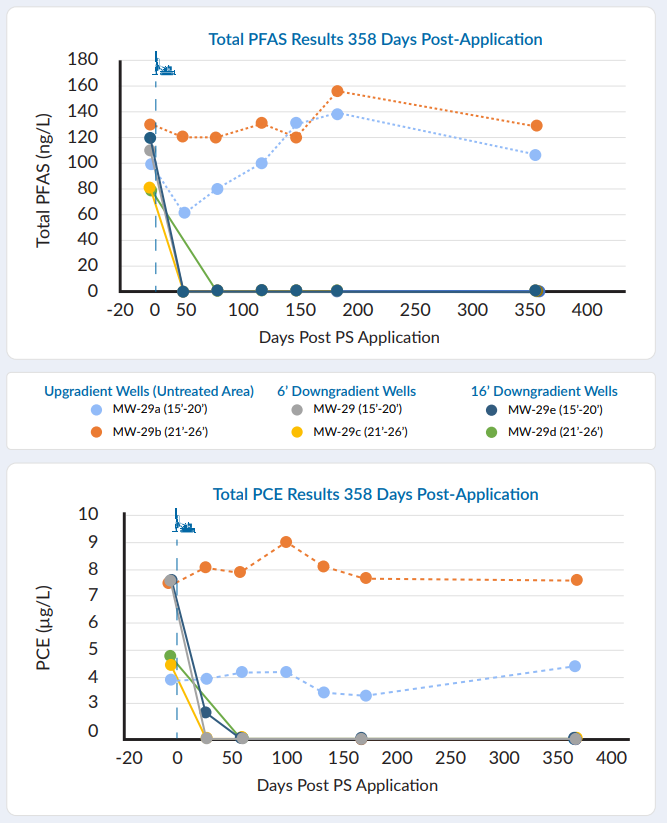In Situ Sorption and Biodegradation
At a Glance
In Situ Sorption and Biodegradation Overview
In situ sorption involves the injection or direct mixing of activated carbon into groundwater and soil for the primary purpose of rapid removal of contaminants from the mobile phase. Sorption via activated carbon is a powerful approach that is most often deployed to achieve complete remediation at sites characterized by low-level, lingering contamination; address back diffusion of contaminants emerging out of low permeability zones; or reach stringent cleanup targets quickly.

To achieve successful results using sorption, REGENESIS has developed technologies using colloidal activated carbon. This is activated carbon that is milled down to 1-2 microns (most granular activated carbon used for remediation is 1,000 microns in size). In the case of PlumeStop Liquid Activated Carbon, it is suspended in water using advanced polymer chemistry. As a result of their colloidal properties, all REGENESIS activated carbon products, including PlumeStop and PetroFix Remediation Fluid, distribute in situ under low pressure injection, and achieve very rapid sorption of contaminants.
Once the colloidal activated carbon has been applied in the subsurface, the sorbed contaminants are removed from the mobile phase and can then be treated to promote enhanced biodegradation. When using PlumeStop to treat chlorinated compounds, this strategy is often combined with other technologies such as 3DME, HRC or S-MicroZVI to promote enhanced biodegradation or chemical reduction of contaminants. When using PlumeStop to treat petroleum hydrocarbons, the activated carbon is often combined with ORC Advanced and/or our ISCO amendments to biodegrade or oxidize contaminants.
In situ sorption can also be used as a stand-alone tactic without biodegrading contaminants. This remediation approach is often strategically selected when dealing with contaminants that do not readily degrade, such as PFAS compounds. Using this approach, PFAS plumes can be sequestered so that they do not impact sensitive receptors. Because colloidal activated carbon injections represent a small fraction of the cost when compared to alternative carbon pump and treat methods, PlumeStop is often selected at PFAS sites to remove risk rapidly and cost-effectively.
PetroFix Remediation Fluid offers an approach to treat petroleum contaminants quickly and effectively using in situ sorption and biodegradation. PetroFix removes hydrocarbons from the dissolved phase by adsorbing them on to the micron-scale activated carbon particles and then stimulates hydrocarbon biodegradation by adding electron acceptors.
REGENESIS welcomes the opportunity to provide you and your team with the tools you need to successfully plan and execute your next sorption and biodegradation project.
If you currently have a project and need a remediation solution now, request a design.
Have questions or want to explore some ideas? Contact Us to get in touch with a local representative.
Learn More
- Is in situ sorption and biodegradation the right solution for your contamination concern? Find out here.
- Learn more about these REGENESIS products:
- Have a look at our track record with these case studies.

 Americas
Americas Europe
Europe Français
Français Deutsch
Deutsch Italiano
Italiano Español
Español


